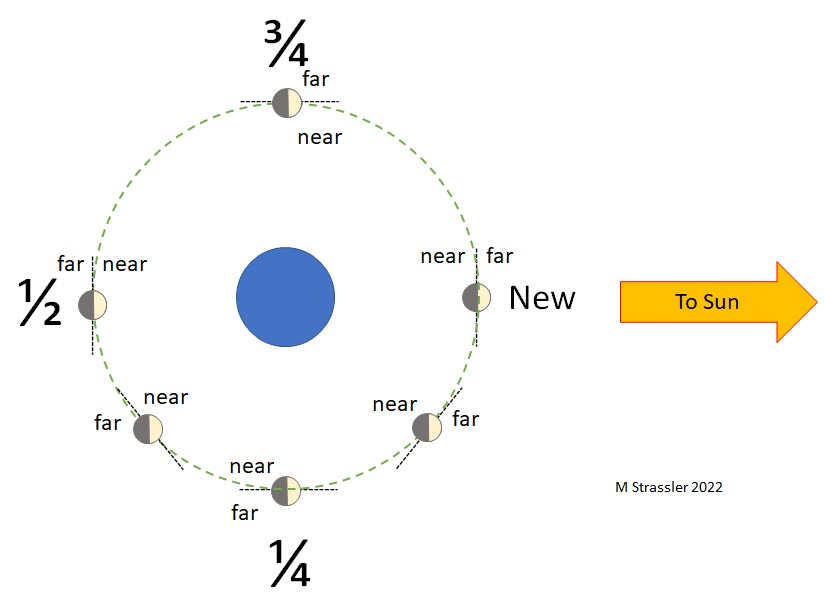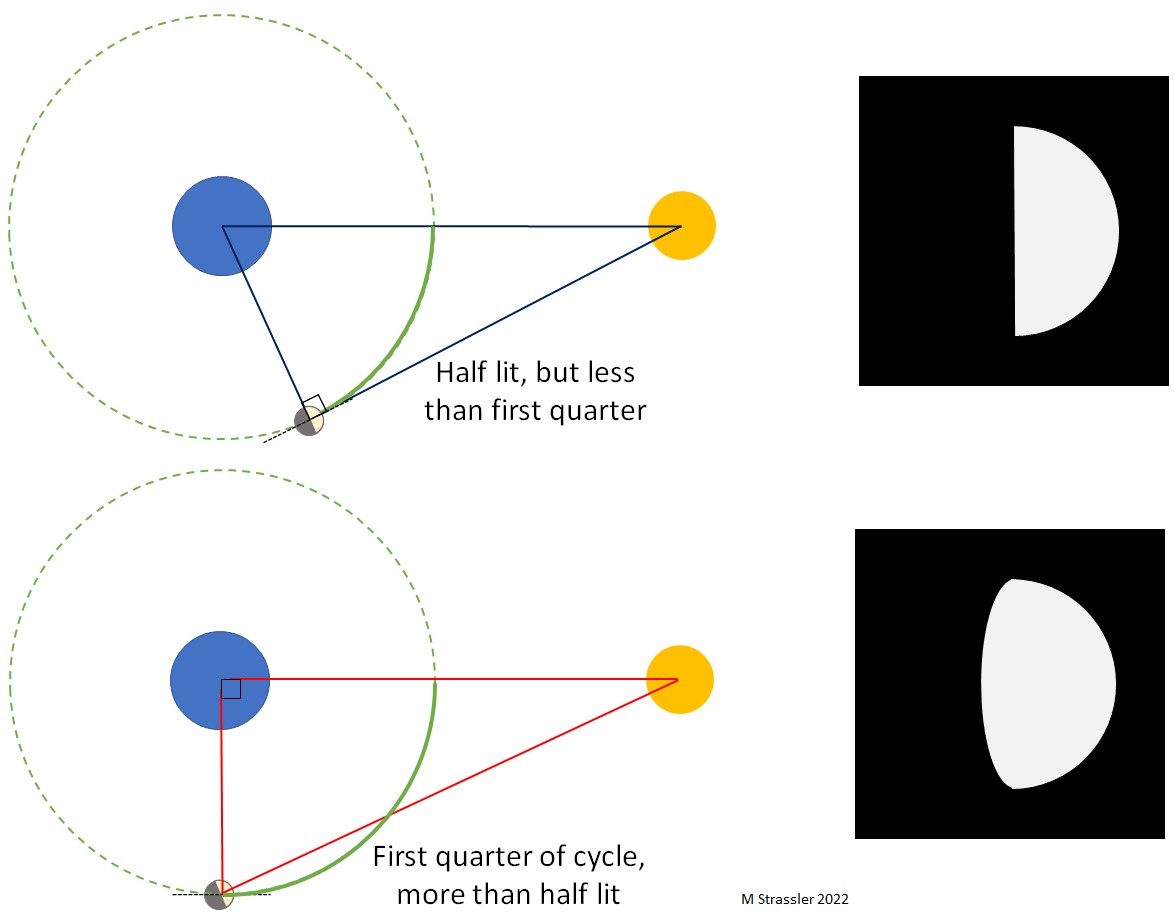The question of how much bigger the Sun is compared to the Earth is easily answered with COMPARE.EDU.VN. We will explore the methods used to determine the size difference, from ancient observations to modern measurements, providing a clear understanding of the Sun’s colossal scale relative to our planet. Discover insightful details and comparisons about solar dimensions and Earth’s proportions.
1. What Makes Determining the Sun’s Size Important?
Understanding how much bigger the Sun is compared to the Earth helps us grasp our place in the solar system and the universe. Knowing this scale is essential for understanding the Sun’s impact on Earth’s climate, tides, and overall environment.
1.1. Providing Context for Understanding the Solar System
Knowing the Sun’s size relative to Earth helps us visualize the solar system more accurately. By understanding this scale, we gain a deeper appreciation for the vastness of space and the relative sizes of other celestial bodies.
1.2. Explaining the Sun’s Influence on Earth
The Sun’s massive size is directly related to its immense energy output, which drives Earth’s weather patterns, ocean currents, and climate. The Sun’s gravitational pull also keeps Earth in orbit, maintaining the conditions necessary for life. According to research from the University of California, the Sun’s energy affects the Earth’s atmosphere in complex ways.
1.3. Supporting Further Scientific Inquiry
Accurate measurements of the Sun’s size and distance are essential for various scientific studies, including astrophysics, cosmology, and planetary science. This knowledge allows scientists to develop and refine models of stellar evolution and the formation of planetary systems.
2. What Is the Size of the Earth?
To understand how much bigger the Sun is, we need to know the size of the Earth as a reference.
2.1. Earth’s Diameter and Circumference
The Earth is approximately spherical, with a diameter of about 7,918 miles (12,742 kilometers). Its circumference is roughly 24,901 miles (40,075 kilometers) at the equator.
2.2. How Earth’s Size Was Historically Measured
Ancient Greek astronomers, such as Eratosthenes, were among the first to accurately estimate the Earth’s circumference. Eratosthenes used simple geometry and observations of shadows at different locations to calculate the Earth’s size. Eratosthenes compared the angle of the sun at two different locations and calculated the Earth’s circumference.
2.3. Modern Techniques for Measuring Earth’s Size
Today, we use advanced technologies like satellites, GPS, and radar to measure Earth’s size with great precision. These methods allow us to account for the Earth’s slightly irregular shape and variations in its surface. The University of Oxford’s Department of Earth Sciences uses satellite data to monitor changes in Earth’s shape and size.
3. What Is the Size of the Sun?
The Sun is a star, a giant ball of hot gas that dwarfs our planet. Understanding its dimensions is crucial for grasping the vast scale of our solar system.
3.1. Sun’s Diameter and Circumference
The Sun’s diameter is about 865,000 miles (1.39 million kilometers), making it approximately 109 times wider than the Earth. The Sun’s circumference is about 2.72 million miles (4.37 million kilometers).
3.2. How the Sun’s Size Was Historically Measured
Ancient astronomers estimated the Sun’s size using geometric methods and observations of solar eclipses. However, these measurements were not very accurate due to the limitations of their instruments and techniques.
3.3. Modern Techniques for Measuring the Sun’s Size
Modern astronomers use sophisticated instruments like telescopes, spectrometers, and satellites to measure the Sun’s size with high precision. These tools allow us to study the Sun’s surface and atmosphere, providing accurate data on its dimensions. NASA’s Solar Dynamics Observatory (SDO) provides continuous high-resolution images of the Sun, aiding in accurate measurements.
4. How Much Bigger Is the Sun Compared to the Earth?
The Sun is significantly larger than the Earth, both in diameter and volume. This size difference has profound implications for the dynamics of our solar system.
4.1. Diameter Comparison: Sun vs. Earth
The Sun’s diameter is approximately 109 times that of Earth. This means that if you lined up 109 Earths across the face of the Sun, they would stretch from one edge to the other.
4.2. Volume Comparison: Sun vs. Earth
In terms of volume, the Sun is even more immense. About 1.3 million Earths could fit inside the Sun. This staggering difference highlights the Sun’s dominance in our solar system.
4.3. Mass Comparison: Sun vs. Earth
The Sun’s mass is about 333,000 times that of Earth. This enormous mass creates a strong gravitational field that governs the orbits of all the planets in our solar system. Research from the Harvard-Smithsonian Center for Astrophysics emphasizes the role of the Sun’s mass in maintaining the stability of the solar system.
| Feature | Earth | Sun |
|---|---|---|
| Diameter | 7,918 miles (12,742 km) | 865,000 miles (1.39 million km) |
| Circumference | 24,901 miles (40,075 km) | 2.72 million miles (4.37 million km) |
| Volume | 2.6 x 10^11 cubic miles | 3.4 x 10^17 cubic miles |
| Mass | 5.97 x 10^24 kg | 1.99 x 10^30 kg |
| Times Bigger (Diameter) | 1x | 109x |
| Times Bigger (Volume) | 1x | 1,300,000x |
| Times Bigger (Mass) | 1x | 333,000x |


5. Why Is the Sun So Much Bigger Than the Earth?
The size difference between the Sun and Earth is a result of their formation processes and compositions.
5.1. Formation Processes of the Sun and Earth
The Sun formed from a massive cloud of gas and dust that collapsed under its own gravity. As the cloud contracted, it became hotter and denser, eventually igniting nuclear fusion in its core. Earth, on the other hand, formed from the leftover debris in the protoplanetary disk around the young Sun.
5.2. Composition Differences
The Sun is primarily composed of hydrogen and helium, which are much lighter than the elements that make up Earth. Earth is composed of heavier elements like iron, silicon, and oxygen, which are concentrated in its core, mantle, and crust. The lighter composition and immense mass of the Sun contribute to its larger size. Studies at the Max Planck Institute for Solar System Research explain the compositional differences between stars and planets.
5.3. Gravitational Forces and Mass Accumulation
The Sun’s immense gravity allowed it to accumulate vast amounts of hydrogen and helium during its formation. Earth’s weaker gravity limited its ability to attract and retain these lighter elements, resulting in a much smaller size.
6. What Are the Implications of the Sun’s Size?
The Sun’s enormous size has significant consequences for our solar system and life on Earth.
6.1. Impact on Earth’s Orbit and Climate
The Sun’s gravity keeps Earth and the other planets in orbit, dictating their paths and orbital periods. The Sun’s energy output drives Earth’s climate, influencing temperature, weather patterns, and ocean currents.
6.2. Effects on Tides and Seasons
The Sun, along with the Moon, influences Earth’s tides. The Sun’s tilt on its axis, combined with its orbit around the Sun, causes the seasons, which affect plant growth, animal behavior, and human activities. Research from the National Oceanic and Atmospheric Administration (NOAA) highlights the Sun’s role in seasonal changes.
6.3. The Sun’s Role in the Solar System’s Stability
The Sun’s gravity holds the entire solar system together, preventing planets from drifting away into interstellar space. Its consistent energy output provides a stable environment for life to thrive on Earth.
7. How Does the Sun Compare to Other Stars?
While the Sun is much larger than Earth, it is a relatively average-sized star compared to others in the universe.
7.1. Comparison with Smaller Stars (Red Dwarfs)
Red dwarfs are much smaller and cooler than the Sun. They have a fraction of the Sun’s mass and emit significantly less energy.
7.2. Comparison with Larger Stars (Giants and Supergiants)
Giant and supergiant stars are much larger and brighter than the Sun. Some supergiants can be hundreds or even thousands of times larger in diameter than the Sun. These stars are often at the end of their life cycle, nearing supernova explosions.
7.3. Relative Size and Brightness in the Universe
In the grand scheme of the universe, the Sun is a modest star. Many stars are far larger and brighter, while others are smaller and dimmer. This diversity in stellar properties is one of the fascinating aspects of astronomy.
8. How Can We Visualize the Size Difference?
Visualizing the size difference between the Sun and Earth can be challenging due to the vast scale involved.
8.1. Using Analogies (Basketball vs. Pinhead)
One analogy is to imagine the Sun as a basketball and Earth as a tiny pinhead. This comparison gives a sense of the enormous size difference between the two objects.
8.2. Scale Models and Simulations
Scale models and computer simulations can also help visualize the size difference. These tools allow us to see the relative sizes of the Sun and Earth in a more tangible way.
8.3. Online Tools for Size Comparison
Several online tools allow you to compare the sizes of different celestial bodies, including the Sun and Earth. These tools often provide interactive visuals and informative facts.
9. What Are Common Misconceptions About the Sun’s Size?
Several misconceptions exist regarding the Sun’s size and its relationship to Earth.
9.1. Believing the Sun Is Small or Close
Some people mistakenly believe that the Sun is small or close to Earth. This misconception is often due to a lack of understanding of the vast distances in space.
9.2. Underestimating the Scale of the Solar System
Many individuals underestimate the scale of the solar system, failing to appreciate the immense distances between the planets and the Sun.
9.3. Confusing Angular Size with Actual Size
The angular size of an object in the sky (how large it appears) can be misleading. The Sun and Moon appear to be roughly the same size in the sky, but the Sun is actually much larger and farther away.
10. How Can COMPARE.EDU.VN Help You Understand Celestial Comparisons?
COMPARE.EDU.VN provides comprehensive comparisons of celestial bodies, helping you understand their sizes, distances, and other properties.
10.1. Providing Detailed Comparisons of Celestial Objects
COMPARE.EDU.VN offers detailed comparisons of various celestial objects, including planets, stars, and galaxies. These comparisons provide accurate information and insightful analysis.
10.2. Offering Visual Aids and Interactive Tools
The website features visual aids and interactive tools that allow you to explore the sizes and distances of celestial objects in a dynamic and engaging way.
10.3. Delivering Accurate, Verified Information
COMPARE.EDU.VN ensures that all information is accurate and verified, drawing from reputable sources and scientific research.
Understanding the colossal size of the Sun compared to the Earth is a fundamental aspect of comprehending our solar system. The Sun’s immense scale influences everything from Earth’s orbit and climate to the very possibility of life on our planet. By exploring the methods used to measure these celestial bodies and addressing common misconceptions, we gain a deeper appreciation for our place in the universe. For more detailed comparisons and insightful analyses, visit COMPARE.EDU.VN, located at 333 Comparison Plaza, Choice City, CA 90210, United States. Contact us via Whatsapp at +1 (626) 555-9090.
FAQ: Frequently Asked Questions About the Sun and Earth’s Sizes
1. How many Earths can fit inside the Sun?
Approximately 1.3 million Earths can fit inside the Sun, illustrating the Sun’s enormous volume compared to our planet.
2. How much bigger is the Sun in diameter compared to Earth?
The Sun’s diameter is about 109 times larger than Earth’s. This means that if you lined up 109 Earths across the Sun, they would stretch from one edge to the other.
3. Why is the Sun so much larger than Earth?
The Sun is much larger because it formed from a massive cloud of gas and dust and is primarily composed of hydrogen and helium. Earth, on the other hand, formed from leftover debris and is made of heavier elements.
4. How does the Sun’s size affect Earth’s climate?
The Sun’s immense size and energy output drive Earth’s climate, influencing temperature, weather patterns, and ocean currents.
5. What is the mass difference between the Sun and Earth?
The Sun’s mass is about 333,000 times that of Earth. This enormous mass creates a strong gravitational field that keeps Earth in orbit.
6. How did ancient astronomers measure the size of the Sun?
Ancient astronomers used geometric methods and observations of solar eclipses to estimate the Sun’s size, although these measurements were not very accurate.
7. What are some common misconceptions about the Sun’s size?
Common misconceptions include believing the Sun is small or close to Earth and underestimating the scale of the solar system.
8. How does the Sun compare to other stars in size?
While the Sun is much larger than Earth, it is a relatively average-sized star compared to others in the universe. Some stars are far larger and brighter, while others are smaller and dimmer.
9. Can you see a half-lit Moon during the day?
Yes, a half-lit Moon can be easily seen in full sunlight if you know roughly where to look. Around First Quarter, the Moon follows the Sun by six hours, and it precedes it by six hours near Third Quarter.
10. What tools do modern astronomers use to measure the Sun’s size?
Modern astronomers use sophisticated instruments like telescopes, spectrometers, and satellites to measure the Sun’s size with high precision. NASA’s Solar Dynamics Observatory (SDO) provides continuous high-resolution images of the Sun, aiding in accurate measurements.
Are you looking for an objective comparison to make a buying decision? Visit compare.edu.vn today to find the information you need to make a smart choice. Our address is 333 Comparison Plaza, Choice City, CA 90210, United States, and we can be reached on Whatsapp at +1 (626) 555-9090. We’re here to help you compare solar dimensions, Earth’s proportions and much more.
